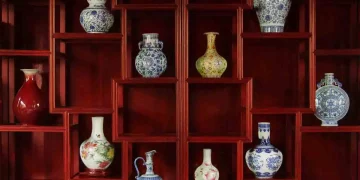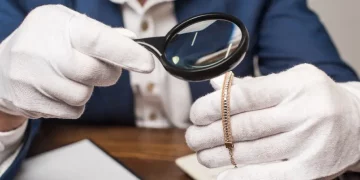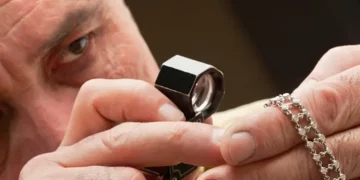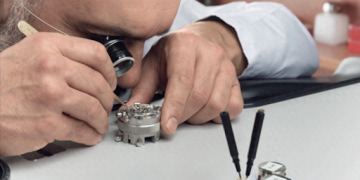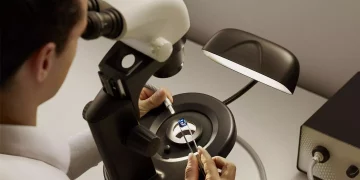For any serious collector, whether you’re into rare artworks, vintage cars, coins, sports memorabilia, or any other valuable items, preservation is a critical part of maintaining and growing your investment. Many people think that collectibles will always increase in value, but the truth is that their worth can be severely diminished if they aren’t properly taken care of. In fact, factors such as improper storage, exposure to harsh environments, and neglecting routine maintenance can cause even the rarest and most valuable items to lose their charm and market value.
In this article, we’ll share proven preservation techniques that will help you extend the lifespan of your precious collectibles while maintaining or even increasing their value. Whether you’re an experienced collector or a first-time investor, these tips are essential for keeping your treasures in pristine condition.
1. Proper Storage: Where You Keep Your Collectibles Matters
Storing your collectibles in the right environment is the first step to ensuring their longevity. The environment in which your items are kept plays a huge role in their preservation. Many collectibles, especially artworks, rare books, and antique furniture, are sensitive to temperature fluctuations, humidity, and even light exposure.
Key Storage Considerations:
- Temperature Control: Extreme temperatures—whether high or low—can lead to cracks, fading, and deterioration. Ideally, you want to store your collectibles in a climate-controlled environment with a consistent temperature. For most items, a range of 60-70°F (15-21°C) is ideal. Fluctuations outside of this range can cause materials like paper, wood, and leather to expand and contract, leading to permanent damage.
- Humidity Levels: Humidity can cause mold, mildew, and warping, especially in materials like paper and wood. Keeping your collection in a space with 40-60% humidity will help protect it from moisture-related damage. You can use dehumidifiers or humidifiers to maintain these levels, depending on your location and the items you are storing.
- Avoid Direct Sunlight: UV rays from the sun can cause fading, discoloration, and material degradation. For artwork and textiles, it’s essential to store them away from direct sunlight or use UV-protective glass if they are framed. Rare books and photographs should also be stored in dark, low-light environments.
Storage Tips:
- Use Protective Cases: For items like coins, jewelry, and sports memorabilia, invest in display cases or acid-free boxes. These containers will not only protect your collectibles from dirt and dust but also prevent scratching and other physical damage.
- Avoid Storing on the Floor: Never store collectibles directly on the floor, as it exposes them to dust, dirt, and potential moisture. Use shelves or cabinets that are slightly off the ground.
- Consider Custom Storage Solutions: If you have a particularly valuable or unique item, you may want to invest in custom-made storage solutions, like archival-quality boxes or humidity-controlled cabinets, to ensure maximum protection.
2. Regular Maintenance: Stay on Top of Care and Cleaning
Even if your collectibles are safely stored, they still require regular maintenance to remain in excellent condition. Different items need different forms of care, so it’s important to tailor your cleaning and maintenance routine to the specific type of collectible.
Cleaning and Maintenance Guidelines:
- Avoid Harsh Chemicals: When cleaning your collectibles, always use mild, non-abrasive cleaning solutions. Harsh chemicals can strip away valuable patina, discolor materials, and even degrade the integrity of the item. For example, never use ammonia or bleach on antique furniture or fine art.
- Gentle Dusting: Dust and dirt are often the biggest enemies of collectibles. Use soft cloths or feather dusters to gently remove dust from your items. For more delicate objects, like porcelain or ceramics, use a soft brush or compressed air.
- Metal Items: Collectible coins, jewelry, and metal objects can tarnish or corrode over time. To preserve their shine and prevent oxidation, consider using protective coatings designed for metal preservation or storing them in anti-tarnish pouches.
- Artworks and Photographs: Regularly inspect your paintings or photographs for any signs of deterioration, such as discoloration, mold, or tears. For photographs, make sure they are stored in acid-free albums or frames with UV-protective glass. If you have an artwork on canvas, avoid handling it with bare hands—always use cotton gloves.
Maintenance Tips:
- Handle with Care: Always use gloves when handling valuable items, especially paper-based collectibles, photographs, or vintage clothing. Oils from your hands can damage surfaces and cause discoloration.
- Consult Experts for Restoration: If an item begins to show signs of wear or damage, don’t attempt to restore it yourself. Seek out professional restoration services that specialize in your type of collectible. Attempting to restore an item improperly can often cause irreversible damage.
- Perform Periodic Inspections: Set a reminder to inspect your collection at least once every 3-6 months. Check for any issues, like signs of pests, mold, or wear, and address them before they become major problems.

3. Insurance and Documentation: Protecting Your Investment
Even the best-preserved collectibles can be at risk of theft, damage, or loss. That’s why it’s crucial to document and insure your collection, especially if it holds significant financial or emotional value.
How to Document Your Collectibles:
- Create an Inventory: Maintain a detailed record of every item in your collection, including its origin, condition, provenance, purchase history, and any authenticity certificates. This inventory will serve as both a reference and a safeguard in case you need to report the item to your insurance company or law enforcement.
- Photographs and Descriptions: Take high-quality photographs of each item from multiple angles. Include close-ups of any markings, signatures, or unique features. Also, keep a written description of the item, including its dimensions, materials, and any distinguishing characteristics.
- Document Condition: Regularly update your inventory with information on the condition of your items. Keep records of any restoration or cleaning performed, and take notes on any changes to the item over time.
How to Insure Your Collection:
- Choose the Right Insurance: If your collection is valuable, you should have it covered by a specialized collectibles insurance policy. General homeowner’s insurance may not cover the full value of rare or valuable items, so seek a policy that specifically protects collectibles.
- Regular Appraisals: The value of your collectibles may increase over time, and it’s essential to have them reappraised periodically to ensure your insurance coverage is up to date. Regular appraisals help you avoid under-insuring your collection.
- Keep Insurance Records: In addition to your inventory, keep a copy of your insurance policy and appraisal documents in a safe place. These documents will be crucial in case you need to make a claim for lost or damaged items.
4. Avoid Overexposure: Environmental and Physical Protection
Aside from climate control and handling techniques, you should also take steps to protect your collectibles from excessive handling, environmental hazards, and physical damage.
Key Environmental Factors:
- Avoid Chemical Exposure: Items like vintage furniture, automobiles, and artworks can be sensitive to chemicals, such as those in cleaning supplies, perfumes, or even certain types of plastic. Always keep your collectibles away from areas where chemical exposure is likely.
- Pests and Animals: Rodents, insects, and pets can cause serious damage to your collectibles, especially paper-based items or textiles. Use pest control methods like sealed storage containers and insect repellents to keep these threats at bay.
- Physical Damage: Store fragile items in custom-fitted boxes or protective sleeves. Avoid stacking heavy items on top of one another, and always ensure fragile items are secured in storage.
Conclusion: Preserve Your Collectibles for a Lifetime
The value of your collectibles won’t necessarily diminish over time if you take the right steps to preserve them. Proper storage, maintenance, documentation, and insurance are all vital to ensuring your collection stays in top condition, maintains or increases in value, and provides lasting enjoyment for years to come.
Investing in your collectibles’ care today means that you can protect your investment and ensure that your rare treasures continue to appreciate—both financially and historically. Whether you’re preserving a masterpiece painting, a vintage car, or a rare coin collection, the key is to remain diligent, proactive, and consistent with your preservation efforts. By doing so, you’ll not only extend the life of your collectibles but also safeguard the legacy they carry.





